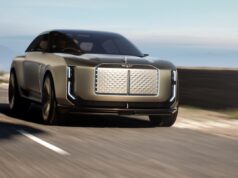Nissan has announced its plan to expand the use of Advanced High Tensile Strength Steel (AHSS) in to up to 25 percent of the vehicle parts installed in its new models.
Nissan has announced its plan to expand the use of Advanced High Tensile Strength Steel (AHSS) in to up to 25 percent of the vehicle parts installed in its new models. Nissan will make use of advanced high tensile strength steel starting in 2017 as one of its initiatives to help reduce vehicle weight.

Nissan has developed 1.2 gigapascal (GPa) Ultra High Tensile Strength Steel with High Formability and has employed it in the new Infiniti Q50, which goes on sale in North America in 2013. Prior to the development of 1.2GPa ultra high strength steel it had been difficult to use high tensile steels for vehicle parts with highly complex shapes. Through an optimal combination of materials, the jointly-developed 1.2 GPa Ultra High Tensile Strength Steel with High Formability provides greater elongation, and offers strength and high formability, to make lighter-weight steel sheets. These attributes enable it to be used for parts with complex shapes, which had been difficult to manufacture using established high tensile steels.
With the active adoption of 1.2 GPa ultra high strength steel, which is one grade among several types of advanced high tensile strength steels, Nissan will increase the adoption rate of AHSS as far as 25 percent of the gross weight of the parts installed per vehicle. This effort will begin in 2017 and aims to reduce the weight of Nissan’s vehicles by 15 percent with corresponding body structure rationalization.









